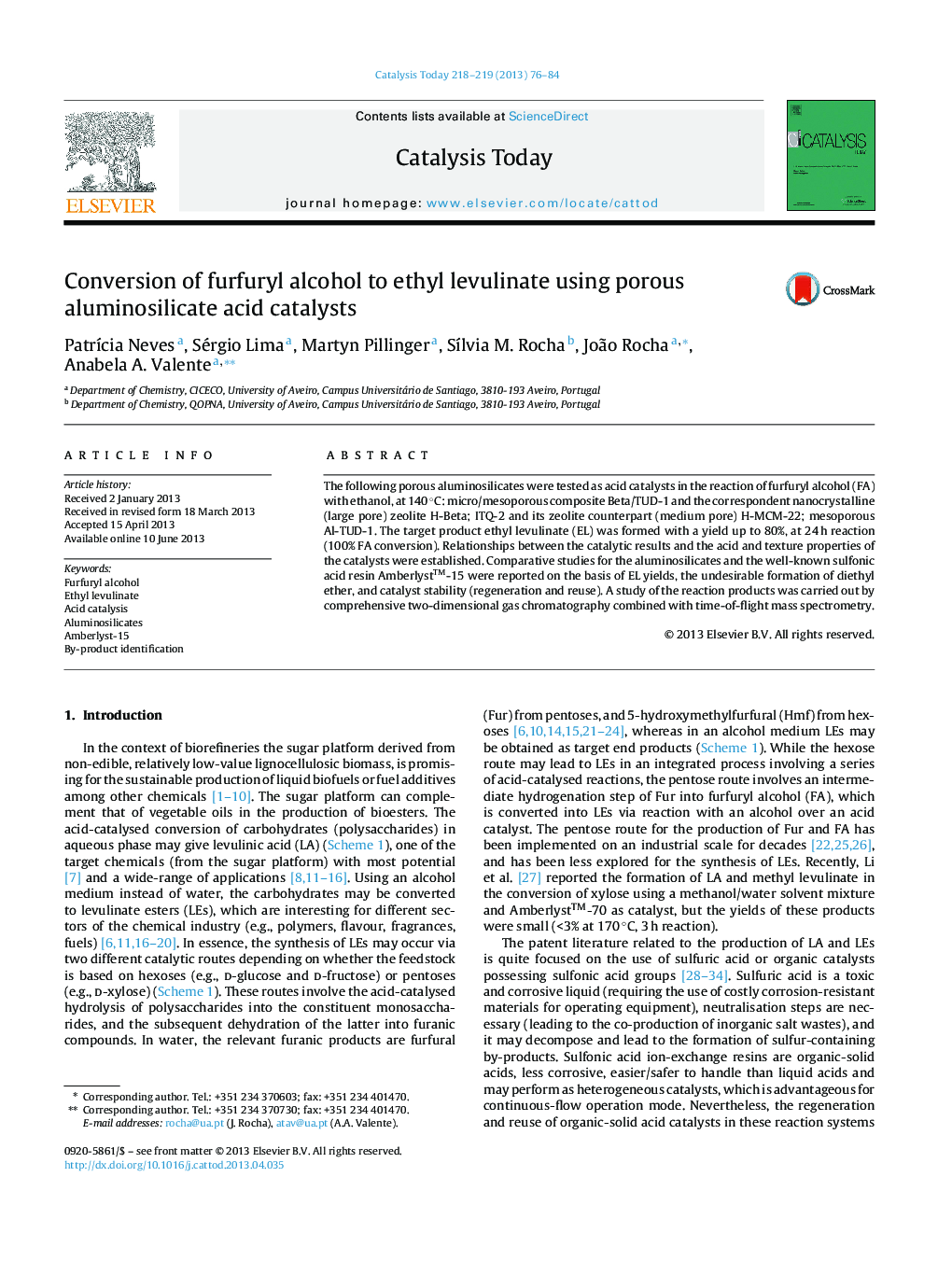| Article ID | Journal | Published Year | Pages | File Type |
|---|---|---|---|---|
| 54753 | Catalysis Today | 2013 | 9 Pages |
•Conversion of furfuryl alcohol into ethyl levulinate using aluminosilicate acid catalysts.•Identification of reaction products by GC × GC-ToFMS analyses.•Ether, acetal, ester by-products from the non-productive consumption of ethanol.•Comparative study of catalytic performances of aluminosilicates and Amberlyst™-15.
The following porous aluminosilicates were tested as acid catalysts in the reaction of furfuryl alcohol (FA) with ethanol, at 140 °C: micro/mesoporous composite Beta/TUD-1 and the correspondent nanocrystalline (large pore) zeolite H-Beta; ITQ-2 and its zeolite counterpart (medium pore) H-MCM-22; mesoporous Al-TUD-1. The target product ethyl levulinate (EL) was formed with a yield up to 80%, at 24 h reaction (100% FA conversion). Relationships between the catalytic results and the acid and texture properties of the catalysts were established. Comparative studies for the aluminosilicates and the well-known sulfonic acid resin Amberlyst™-15 were reported on the basis of EL yields, the undesirable formation of diethyl ether, and catalyst stability (regeneration and reuse). A study of the reaction products was carried out by comprehensive two-dimensional gas chromatography combined with time-of-flight mass spectrometry.
Graphical abstractFigure optionsDownload full-size imageDownload high-quality image (271 K)Download as PowerPoint slide
